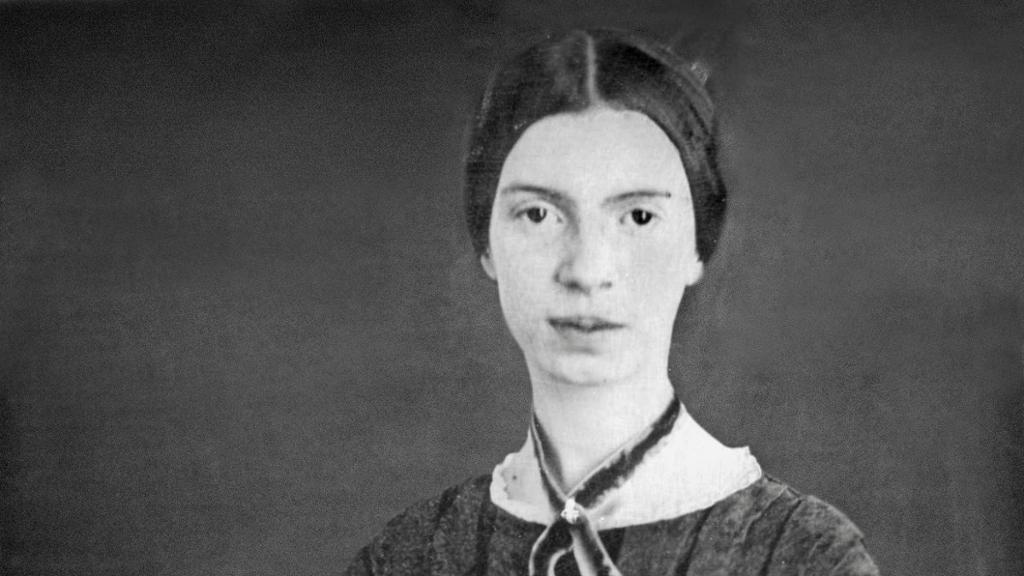Emily Dickinson

Emily Dickinson (1830–1886) was an American poet who was born in Massachusetts. She grew up in a successful family with strong community ties, but she lived a mostly introverted and reclusive life. Among the locals, she was considered an eccentric, and she became known for her reluctance to greet guests and for always wearing white clothing. In her later life, she hardly ever left her room, and her friendships were therefore carried out by correspondence.
Dickinson was a private poet, and very few of her poems were published during her lifetime. After her death, her sister found nearly eighteen hundred poems stashed away in a bureau drawer. Emily Dickinson's poems are characterised by short lines, and they usually lack titles. The poems often use slant rhyme as well as unconventional capitalisation and punctuation. Many of her poems deal with the themes of death and immortality.
In the boxes, you will find two examples of her poetry. Read the poems and work on the tasks.
Hope is the Thing with Feathers
Hope is the thing with feathers
That perches in the soul,
And sings the tune without the words,
And never stops at all,
And sweetest in the gale is heard;
And sore must be the storm
That could abash the little bird
That kept so many warm.
I've heard it in the chilliest land
And on the strangest sea;
Yet, never, in extremity,
It asked a crumb of me.
Answer as fully as you can.
Describe what this poem is about using your own words.
- In this poem, the image of a bird is used to represent hope. What do you associate with birds? What connotation does the word 'bird' have? What is achieved by using this image in the poem?
- Explain what images from nature Dickinson has used in this poem.
What is the theme of the poem?
What is the message of the poem?
I'm Nobody! Who are you? (260)
I'm Nobody! Who are you?
Are you – Nobody – too?
Then there's a pair of us?
Don't tell! they'd advertise – you know!
How dreary – to be – Somebody!
How public – like a Frog –
To tell one's name – the livelong June –
To an admiring Bog!
Answer as fully as you can.
Using your own words, try to explain what this poem is about.
Describe the speaker in this poem. Who is Nobody?
- Dickinson uses the word 'frog' in this poem. What connotation does the image of a frog give you? What are the qualities of a frog?
Is this poem about recognition?
Is this poem about identity?
Find out more about Emily Dickinson's life, and try to decide whether either poem can be said to be biographical.
Link to biographyonline's website: biography of Emily Dickinson.
Choose one of the tasks:
Analyse one of the poems and discuss whether the poem has relevance for readers today.
Compare the two poems and explain what they tell us about Emily Dickinson's writing style.
Emily Dickinson has traditionally been regarded as isolated and reclusive. She has been presented as virginal and private. More recent research suggests that she had a lifelong relationship with her childhood friend Susan Gilbert, who married Emily's brother.
Emily Dickinson wrote a number of love letters to Susan Gilbert. Find and read some of them online.
Find out: How was homosexuality regarded at the time?
Discuss: Why was this significant relationship in Dickinson's life ignored by scholars for so long?
Present your findings in a short text or in an oral presentation.